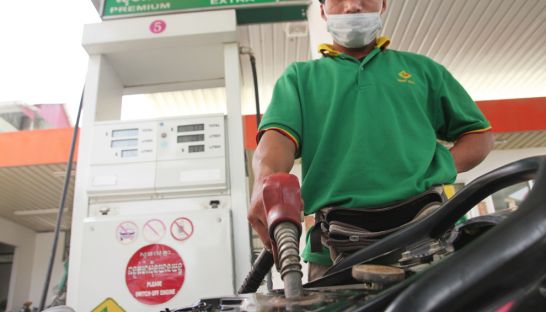Cambodia to feel an energy crunch, but growth to remain stable: report
Cambodia to feel an energy crunch, but growth to remain stable: report
Energy demand in Southeast Asia is expected to increase by more than 80 per cent by 2035, fuelling some $240 billion in oil spending, a new report from the International Atomic Energy Association (IAEA) shows.

In its "Southeast Asia Energy Outlook" published yesterday, the Paris-based IAEA estimates that oil imports will climb to more than five million barrels per day, doubling dependency and making the region the world’s fourth-largest recipient after China, India and the EU.
The increased reliance on oil in the region “will impose high costs and leave it more vulnerable to potential disruptions”, the report said, suggesting that for Association of Southeast Asian Nations (ASEAN) member states like Cambodia, which imports all its oil and has yet to tap natural resources, the price shocks could hit hard.
The IAEA also noted that between 2002 and 2011, the number of people with access to electricity in Cambodia doubled. But that still leaves nine million, or 66 per cent of the population, without access. Thirteen million Cambodians, a staggering 88 per cent of the population, are relying on traditional biomass methods for cooking, according to the IAEA report.
On the same day of the energy association’s gloomy outlook, the Asian Development Bank released an upbeat forecast for growth in Cambodia, keeping the rate steady at 7.2 per cent.
“So far this year, most sectors have performed as projected in April,” the Manila-based development bank said in its "Asian Development Outlook 2013 Update" yesterday. In 2014, growth is expected to pick up to 7.5 per cent as recovery takes hold in Europe and the US.
“Cambodia’s economy is expected to remain buoyant over the next two years, reflecting steady reforms and recovery in the traditional global markets,” Eric Sidgwick, ADB country director for Cambodia, said in the statement yesterday.
ADB’s outlook contrasts with several warnings from analysts and officials about the impact that post-election instability could have on the economy.
In comments after the July 28 poll, then-Minister of Commerce Cham Prasidh warned in August that demonstrations could derail growth and lead to riots and looting. A recent study conducted by Indochina Research shows that confidence among foreign business leaders in the country has plummeted roughly 50 per cent in the aftermath of the disputed vote.
“I almost agree with the analysis of ADB on the performance of the Cambodian economy and estimated growth rate,” said Hiroshi Suzuki, chief economist at the Business Research Institute for Cambodia.
“Regarding the impact of the political situation, it’s difficult to estimate the affect on economic performance at this moment.
“The four engines of the Cambodian economy are all in good situations: Export, construction, tourism and agriculture.”
According to the ADB outlook, garment and footwear exports to the US and the EU reached $2.3 billion in the first six months, an 11.3 per cent year-on-year increase. Milled rice exports doubled to $122 million, while construction project approvals totalled $1.9 billion.
The tourism sector saw a 19.1 per cent year-on-year increase, with 2.1 million visiting Cambodia from January to June. The ADB forecasts the whole service sector will grow by about seven per cent this year.
Regionally, unexpected sluggish growth in Indonesia, Malaysia and Thailand is cutting into the overall predicted economic performance in Southeast Asia. The 10-member ASEAN is forecast to grow by 4.9 per cent this year, down from 5.6 per cent in 2012.
“One of the reasons for the difference with other countries is that US and EU are major export destinations for Cambodia,” Suzuki said. “Cambodia will not be so affected by the slow down of the economy in emerging countries such as China and India.”
phnompenh post













